Sixth Form Subjects

ART & DESIGN
| Exam Board | Edexcel | Ask us a question | |
| Course Duration | Two Year, Full-Time | Apply | |
| Intake Date | September |
Course Overview
Edexcel A level Art and Design qualification: Fine Art
Fine art requires engagement with aesthetic and intellectual concepts using traditional and/or digital media, materials, techniques and processes for the purpose of self-expression, free of external constraints. Fine art may be created to communicate ideas and messages about the observed world, the qualities of materials, perceptions, or preconceptions. It can also be used to explore personal and cultural identity, society and how we live, visual language, and technology. Fine Art allows us to consider and reflect on our place in the world, both as individuals and collectively. Drawing in fine art forms an essential part of the development process from initial idea to finished work; from rough sketches to diagrams setting out compositions, to digital drawings used for installations or as part of three-dimensional work. Students should use a variety of tools, materials and techniques, as appropriate, for recording their surroundings and source materials. Students should consider the application and implications of new and emerging technologies that can be used in conjunction with traditional and digital fine art materials.
Contexts for fine art can be found in a wide range of sources; for example, from historical works in museums, contemporary art shows and fairs, an exhibition at a local gallery, films, architecture, music, literature and nature.
Course Content and Assessment
Each is made up of two components:
A Personal Investigation (60%) and an Externally set
task (40%).
Component 01: Personal Investigation.
Incorporates three major elements: supporting studies, practical work, and a personal study.
- Supporting studies and practical work will comprise a portfolio of development work and outcomes based on themes and ideas developed from personal starting points.
The personal study will be evidenced through critical written communication showing contextual research and understanding in a minimum 1000 words of continuous prose, which may contain integrated images. The personal study comprises 12% of the total qualification and is marked out of 18. - Work must cover all four Assessment Objectives and be marked using the assessment grid
90 Marks - non-exam assessment (internally assessed and externally moderated)
60% of total A Level
Component 02: Externally set task:
This component allows students opportunities to generate and develop ideas, research primary and contextual sources, record practical and written observations, experiment with media and processes, and refine ideas towards producing personal resolved outcome(s) in response to an externally set theme. This will require students to address each of the Assessment Objectives
- Incorporates two major elements: preparatory studies and the 15–hour period of sustained focus.
- Preparatory studies will comprise a portfolio of practical and written development work based on the Externally Set Assignment.
- During the 15–hour period of sustained focus under examination conditions, students will produce final outcome(s) extending from their preparatory studies in response to the Externally Set Assignment.
- The Externally Set Assignment is released on 1 February and contains a theme and suggested starting points.
- Students have from 1 February until the commencement of the final 15–hour period of sustained focus to develop preparatory studies.
- Work must cover all four Assessment Objectives
- Marks available: 72. 40% of A level
Learning Methods
The course is designed to stimulate interest and enjoyment and help to contribute to the development of a thinking, responsible and visually literate individual.
Extensive opportunities are given to the student to develop his/her descriptive, interpretative and analytical skills whilst an emphasis is obviously placed on acquiring necessary subject based skills and knowledge. This course is suitable for people who are well motivated and committed to the Arts generally. The subject is taught by two senior members of the department, and on-going discussion about work projects and art based issues is an important method of immersing the students in thinking about all aspects of their own work, and the work of practising artists and crafts people.
Future Pathways
 POSSIBLE Careeer Pathways
POSSIBLE Careeer Pathways
Art & Design students can progress to higher education courses in Design Studies then get jobs as:
1. Graphic and multimedia designers
2. Marketing associate professionals
3. Interior designers
4. Design occupations
5. Clothing, fashion and accessories designers
6. Web design professionals
7. Artists
8. Other administrative occupations
9. Public relations professionals
10. Buyers and procurement officers
Entry Requirements
6 or above in an art or design based subject, although in exceptional cases students who have attained a 5 grade will be admitted after an interview to ascertain their commitment and capabilities.
In exceptional cases for students who have not taken GCSE art, yet have a very strong portfolio, we would consider their application at interview.
A Level Photography Showcase
Student Testimonial
Testimonial in the pipeline
Other courses of interest
- Creative Digital Media Production
- Photography
- Music





